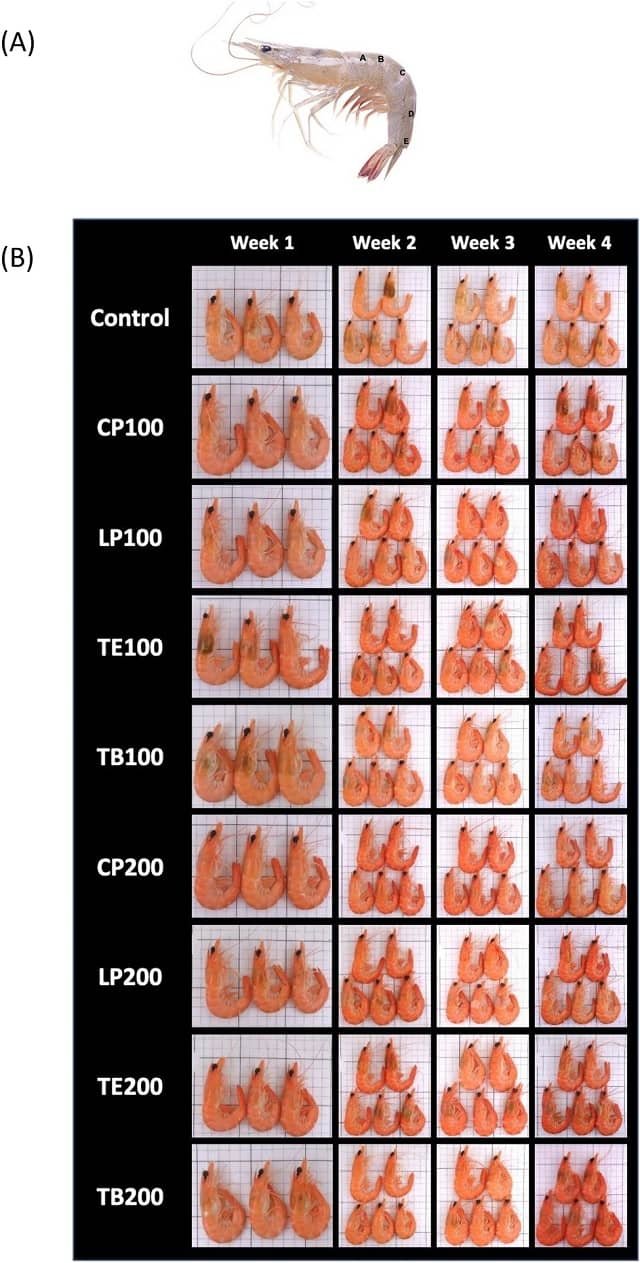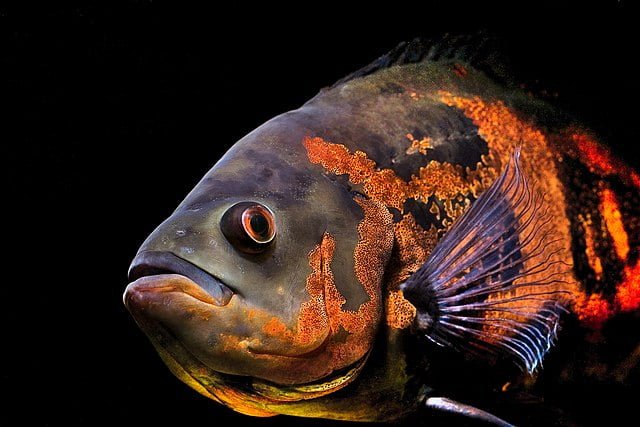
Vitamin E (VE) is a crucial antioxidant for aquatic animals, protecting them from oxidative stress. However, traditional supplementation of VE in fish feed often faces challenges due to losses during processing and digestion.
Researchers from the Agriculture Research Center (ARC) and the National Institute of Oceanography and Fisheries (NIOF) explored an innovative approach: encapsulating vitamin E (VE) within chitosan nanoparticles (VENPs) to enhance its stability and bioavailability in Nile tilapia. They fed Nile tilapia a diet supplemented with VE and chitosan-protected VE nanoparticles (NP) at different levels (25%, 50%, 75%, and 100%) over 4, 6, and 8 weeks.
Nanotechnology in Aquaculture: A Promising Frontier
Nanotechnology offers innovative solutions in aquaculture, including the development of nanoscale materials for feed additives and disease control.
Chitosan, a natural biopolymer, exhibits antibacterial and immunostimulatory properties when used in nanoscale form. Vitamin E, an essential antioxidant, plays a crucial role in protecting cells against oxidative stress and supporting immune function. Nanotechnology facilitates the effective utilization of vitamin E by aquatic organisms.
Improved Growth and Feed Efficiency
The study, published in the journal BMC Veterinary Research, demonstrated a significant positive impact of VENPs on tilapia growth. Fish fed with VENPs showed:
- Enhanced growth parameters: Higher total weight gain (TG), daily weight gain (DWG), and relative growth rate (RGR) were observed across all VENP-fed groups compared to the control and bulk VE groups.
- Improved feed efficiency: Feed conversion ratio (FCR) was significantly lower in tilapia receiving VENPs, indicating better feed utilization.
Enhanced Immunity and Disease Resistance
VENPs significantly boosted the immune response of Nile tilapia:
- Elevated immune parameters: Lysozyme activity, serum antibacterial activity, and oxidative burst activity were significantly higher in fish fed higher doses of VENPs (VENPs75 and VENPs100), indicating a stronger innate immune system.
- Improved disease resistance: Tilapia fed VENPs exhibited significantly lower mortality rates when challenged with the pathogenic bacterium Aeromonas hydrophila. This improved resistance was attributed to the strengthened immune system.
Dose-Dependent and Time-Dependent Effects
- Dose-dependent protection: The level of relative protection (RPL) against A. hydrophila infection increased with higher VENP doses, with the highest protection observed in the VENP100 group.
- Time-dependent effects: The protective effects of VENPs increased over the 8-week feeding period.
Mechanisms of Action
According to the researchers, the beneficial effects of VENPs can be attributed to several factors:
- Enhanced bioavailability: Nanoencapsulation improves VE bioavailability and stability, ensuring better absorption and utilization by fish.
- Synergistic effects: The combination of VE and chitosan nanoparticles likely exerts synergistic effects, enhancing both antioxidant and immune functions.
- Multifaceted role of chitosan: Chitosan contributes to improved digestion, gut health, and immune stimulation.
Practical Implications for Fish Farmers
This study provides valuable insights to optimize tilapia aquaculture practices:
Stay Always Informed
Join our communities to instantly receive the most important news, reports, and analysis from the aquaculture industry.
- Improved feed formulations: Incorporating VENPs into tilapia feed at 50, 75, and 100 mg/kg can enhance growth performance, feed efficiency, and disease resistance.
- Better fish health: By strengthening the immune system, VENPs can contribute to healthier and more robust tilapia populations, reducing disease outbreaks and improving overall aquaculture sustainability.
Further Research Needed
- Optimizing VENP dosage and feeding strategies for different tilapia growth stages.
- Investigating the long-term effects of VENPs on tilapia health and performance.
- Evaluating the cost-effectiveness of VENPs compared to conventional feed additives.
Conclusion
This research highlights the significant potential of chitosan-protected VE nanoparticles as a valuable dietary supplement for Nile tilapia. The study recommends incorporating VENPs into Nile tilapia diets at doses of 50, 75, and 100 mg/kg of fish feed.
By improving the stability and bioavailability of VE, VENPs effectively enhance growth, feed efficiency, and disease resistance, offering a promising strategy for sustainable and cost-effective tilapia aquaculture.
Contact
Ahmed H. Sherif
Fish Diseases Department, Animal Health Research Institute AHRI, Agriculture Research Centre ARC
Kafrelsheikh, Egypt
Email: ahsherif77@yahoo.com
Reference (open access)
Farag, E.A.H., Baromh, M.Z., El-kalamwi, N. et al. Vitamin E nanoparticles enhance performance and immune status of Nile tilapia. BMC Vet Res 20, 561 (2024). https://doi.org/10.1186/s12917-024-04398-w
Editor at the digital magazine AquaHoy. He holds a degree in Aquaculture Biology from the National University of Santa (UNS) and a Master’s degree in Science and Innovation Management from the Polytechnic University of Valencia, with postgraduate diplomas in Business Innovation and Innovation Management. He possesses extensive experience in the aquaculture and fisheries sector, having led the Fisheries Innovation Unit of the National Program for Innovation in Fisheries and Aquaculture (PNIPA). He has served as a senior consultant in technology watch, an innovation project formulator and advisor, and a lecturer at UNS. He is a member of the Peruvian College of Biologists and was recognized by the World Aquaculture Society (WAS) in 2016 for his contribution to aquaculture.




